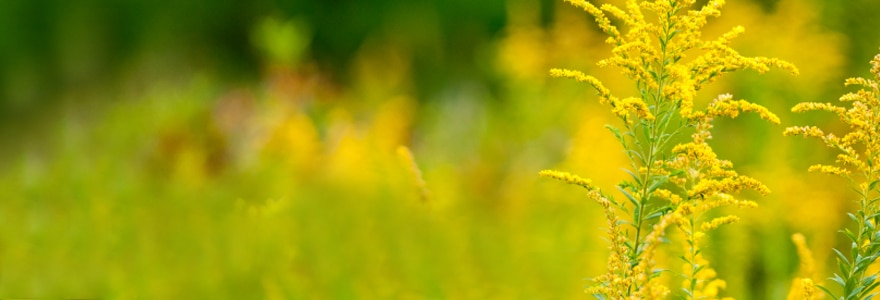Seasonal allergic rhinitis is caused by allergy to various pollens such as grasses, trees, ragweed and weeds. Symptoms often include sneezing, runny nose, itchy watery eyes, fatigue. and occasionally leads to shortness of breath, cough, and wheezing. Many people who suffer from allergies feel like they have a bad cold every day that just never goes away. In addition to all of these symptoms, fatigue can be a direct result of the allergic condition complicated by sleep disruption from persistent nasal obstruction. Severe allergic rhinitis can cause significant disruption to school and work performance in addition to negatively impacting mood and affect.
In northwest Indiana, tree pollen usually begins in early to mid March and continues until the beginning or June. In addition to all of the usual allergy symptoms listed above, tree pollen allergy is often associated with mild to severe eye allergy symptoms. Patients with tree pollen allergy often suffer from itchy watery eyes that can be severe enough to interfere with normal activities. Grass pollen begins around the first June just as tree pollen begins to fade. Patients with grass pollen allergy will often blame their symptoms on cottonwood as these poplar trees begin to loose their cottony seeds at just about the same time as grass pollen comes out. Cottonwood begins to pollinate in March and April and there is no significant levels of this tree’s pollen left when it begins to drop it’s white puffy balls containing seeds, not pollen. Grass pollen lasts throughout the summer and begins to fade in fall. Children will often develop nasal, eye, and skin allergy symptoms when playing on the grass in spring before grass pollen is out. These symptoms are usually due to tree pollen that falls on the grass and is concentrated there. While mowed lawns do not produce grass pollen, they are a repository for many plant pollens and mold spores throughout spring, summer and fall. Weed pollen begins in mid to late July and ragweed pollen, the common and most severe cause of fall allergy symptoms, begins in late July to the first week of August. People with severe ragweed pollen allergy, called “hay fever”, begin to experience all of the usual allergy symptoms suddenly and these symptoms often persist until late fall. Although allergy symptoms typically occur during certain times of the year as stated above, many people have allergies to one or more types of pollen and then symptoms seem to overlap into other times of the year. In addition, people with allergies to mold or house dust mites will often find their symptoms worse on warm, humid days adding to their usual seasonal symptoms. It is very important to be aware of the severity of your symptoms as well as the exact times of year they begin or worsen.
Environmental Control Methods
Environmental control methods are the cornerstone of therapy. It is critical that the house be closed up and the air conditioning remains running throughout the allergy seasons. Air filtration systems, such as a HEPA filter, remove microscopic pollen from the air and are quite effective. Even on cool nights, the pollen count can be extremely high and the house must remain closed. HEPA filters are ineffective if the windows are left open. Air filters have little if any role in eliminating pet dander or house dust mites. Bedroom doors should be closed at all times and pets should not be allowed in or around the bedroom. Even if you or your children are not allergic to pets, their fur can collect large quantities of pollen and cause significant allergy symptoms at night when they are in the bedroom. It is best not to have carpeting in the bedroom.
Medications
Allergy medications work best when taken regularly. Inhaled nasal steroid sprays effectively treat all symptoms of nasal allergy. Prescription nasal sprays are not “addicting” and are often used in conjunction with other medications. Short-term side effects include sneezing, nasal burning, and occasionally a bloody nose. Most of these side effects are from preservatives in the nose sprays. Changing to different brands can often help relieve these side effects. Newer non-sedating antihistamines block many allergy symptoms. Over-the-counter non- prescription sedating antihistamines such as Benadryl should be avoided because of their short duration of action and their side effects, which can cause difficulty with school, work, driving, and operating motorized equipment. Allergy medications are best taken on a regular basis and not “as needed”. Combinations of medications, such as steroid nasal sprays and antihistamines, work better than either medication alone. When medications seem to fail, it is often because one’s allergy symptoms are more severe and medications alone are no longer able to keep control. It is best to start medications just prior to the beginning of your allergy season and continue until the pollen counts drop significantly. Although pollen counts will drop on rainy days as the rain washes the pollen away (temporarily), the symptoms will eventually return.
Immunotherapy
Allergy immunotherapy is sometimes recommended to control allergy symptoms. Allergy immunotherapy can be very effective but takes several months to improve symptoms and must be continued for several years. Although allergy immunotherapy will not “cure” allergic rhinitis, it can significantly improve many symptoms, help prevent development of asthma, markedly decrease the fatigue associated with other symptoms, and decrease medication use. The decision to begin allergy immunotherapy is very individual and depends on many factors. Allergy immunotherapy should be considered when other methods fail to adequately control symptoms. In particular, the fatigue associated with allergies is rarely controlled with medication. While allergy immunotherapy represents a very large commitment, the long term results are often very dramatic.
